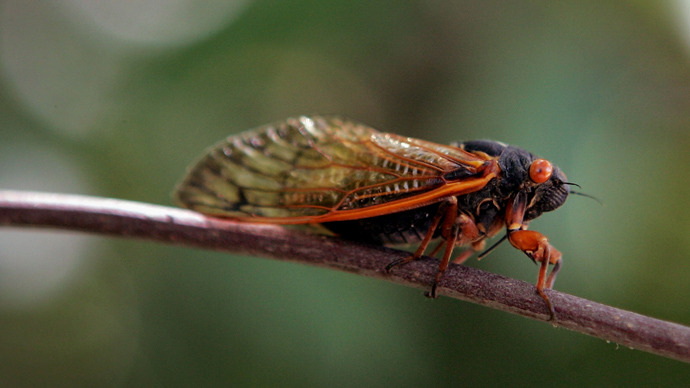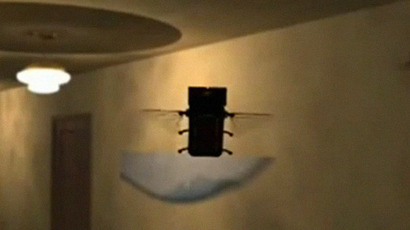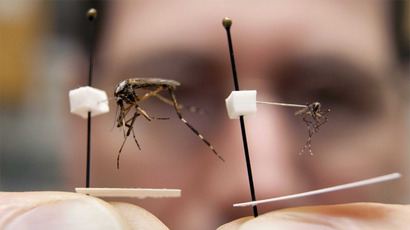East coast of US braces for billions-strong cicada swarm

A vast swath of the east coast is bracing for the arrival of billions of large, winged insects known as cicadas that will begin emerging after 17 years of living underground.
Areas between the states of Georgia and Connecticut will
experience massive swarms of the one-inch-long insects, all members
of what is known as “Brood
II,” one of seven species of the insect whose larvae (or
nymphs) have spent nearly two decades feeding on roots.
The peak of their arrival should come towards the end of May, at
which point the red-eyed, noisy bugs will be well on their way to
outnumbering the number of people living in the region from North
Carolina to Connecticut by 600-to-1.
The insects, though harmless, are considered a nuisance both for
their size and sheer numbers, not to mention the noise pollution
that has been measured at up to 94 decibels, loud enough to drown
out the sound of overhead planes according to the Associated
Press.
The massive brood now preparing to make its debut went into the
ground in 1996, one of eleven other broods that spend 13 or 17
years before reaching their mature form. Once the ground
temperature reaches 64 degrees Fahrenheit, the cicadas are ready to
burst out for a mating frenzy.
The intense buzzing noise let off by the swarms is all part of an
elaborate mating ritual that will last for six weeks before their
deaths.

Female cicadas will lay up to 600 eggs on tree branches after mating, and the offspring will fall to the ground and burrow to begin the 17-year cycle once more and return in 2030.
Scientists are fascinated both by the mathematical accuracy of the cicada life cycle and emergence above ground, as well as the ecological impact of the massive broods, which both reproduce and die in vast numbers.
The decomposing bodies of the adult cicadas will trap nutrients close to tree roots, which will act as a fertilizer for plant life. At the same time, those nutrients will feed the new generation of cicadas now developing underground, a process scientists say can slow tree growth by up to 30 per cent.
Meanwhile, the small tunnels that cicadas bore on their way to the surface are thought to act as soil aerators, trapping rainfall during the summer season.
Additional effects linked to the cicada mating swarms include higher yield for fruit trees, beneficial tree pruning, as well as an increase in bird populations.
Despite the scientific mysteries that still delight the scientists that study them, most residents of the Eastern Seaboard will simply think of the hundreds of cicada husks they'll be left to shovel off their properties.














